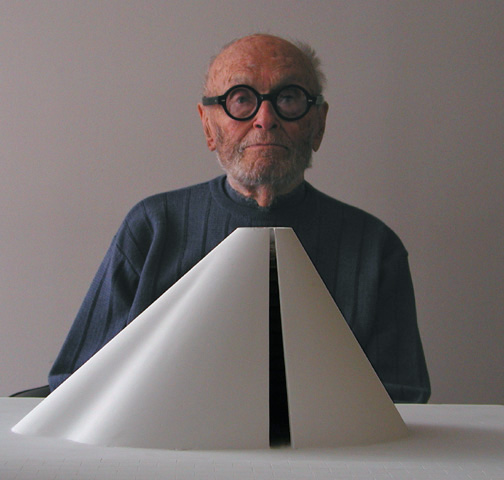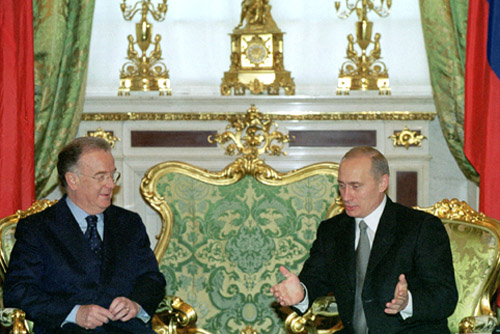|
Estádio Municipal De Braga
The Municipal Stadium of Braga ( pt, Estádio Municipal de Braga) is an all-seater football stadium located in Braga, Portugal, and the current home of Sporting Clube de Braga. It has a capacity of 30,286 spectators, making it the seventh largest football stadium in Portugal. The stadium was designed by Portuguese architect Eduardo Souto de Moura who was awarded the Pritzker Architecture Prize in part for this design. Also known as ''A Pedreira'' (''The Quarry''), for being carved into the side of a mountain, the stadium was built in 2003 as a venue for the UEFA Euro 2004. History The project to build a stadium was developed in 2000 by architect Eduardo Souto Moura. On 5 June, the program to build the new municipal stadium for the European championships in 2004 began, promoted by the municipal council of Braga. Between 2002 and 2003, the municipal stadium was built. The enormous rock moving process contributed heavily to the final €83.1 million cost, the fourth mos ... [...More Info...] [...Related Items...] OR: [Wikipedia] [Google] [Baidu] |
Braga
Braga ( , ; cel-x-proto, Bracara) is a city and a municipality, capital of the northwestern Portuguese district of Braga and of the historical and cultural Minho Province. Braga Municipality has a resident population of 193,333 inhabitants (in 2021), representing the seventh largest municipality in Portugal (by population). Its area is 183.40 km2. Its agglomerated urban area extends from the Cávado River to the Este River. It is the most populated urban area in Portugal outside Lisbon and Porto Metropolitan Areas. It is host to the oldest Portuguese archdiocese, the Archdiocese of Braga of the Catholic Church and it is the seat of the Primacy of the Spains. During the Roman Empire, then known as Bracara Augusta, the settlement was the capital of the province of Gallaecia and later of the Kingdom of the Suebi that was one of the first to separate from the Roman Empire. Inside of the city there is also a castle tower that can be visited. Nowadays, Braga is a major hub fo ... [...More Info...] [...Related Items...] OR: [Wikipedia] [Google] [Baidu] |
Porto
Porto or Oporto () is the second-largest city in Portugal, the capital of the Porto District, and one of the Iberian Peninsula's major urban areas. Porto city proper, which is the entire municipality of Porto, is small compared to its metropolitan area, with an estimated population of just 231,800 people in a municipality with only 41.42 km2. Porto's metropolitan area has around 1.7 million people (2021) in an area of ,Demographia: World Urban Areas March 2010 making it the second-largest urban area in Portugal. It is recognized as a global city with a Gamma + rating from the [...More Info...] [...Related Items...] OR: [Wikipedia] [Google] [Baidu] |
Pritzker Prize
The Pritzker Architecture Prize is an international architecture award presented annually "to honor a living architect or architects whose built work demonstrates a combination of those qualities of talent, vision and commitment, which has produced consistent and significant contributions to humanity and the built environment through the art of architecture.” Founded in 1979 by Jay Pritzker, Jay A. Pritzker and his wife Cindy, the award is funded by the Pritzker family and sponsored by the Hyatt Foundation. It is considered to be one of the world's premier architecture prizes, and is often referred to as the Nobel Prize of architecture. The Pritzker Architecture Prize is said to be awarded "irrespective of nationality, race, creed, or ideology". The recipients receive US$100,000, a citation certificate, and, since 1987, a bronze medallion. The designs on the medal are inspired by the work of architect Louis Sullivan, while the Latin inspired inscription on the reverse of the me ... [...More Info...] [...Related Items...] OR: [Wikipedia] [Google] [Baidu] |
Jorge Sampaio
Jorge Fernando Branco de Sampaio (; 18 September 1939 – 10 September 2021) was a Portuguese lawyer and politician who was the 18th president of Portugal from 1996 to 2006. A member of the Socialist Party, a party which he led between 1989 and 1992, he was the mayor of Lisbon from 1990 to 1995 and High-Representative for the Alliance of Civilizations between 2007 and 2013. He was an opponent to the dictatorship of Estado Novo, who participated in the student crisis in the 1960s and was a lawyer for political prisoners. When he was President, he had an important role in the 1999 East Timorese crisis and under his presidency, Portugal relinquished its last territory in Asia, Macau, which was handed over to China. Early life and political career Sampaio was born in Lisbon on 18 September 1939 in an upper/middle-class family. The Sampaio family lived abroad in the United States and the United Kingdom for some years, due to the professional activity of his father Arnaldo de Sam ... [...More Info...] [...Related Items...] OR: [Wikipedia] [Google] [Baidu] |
President Of Portugal
The president of Portugal, officially the president of the Portuguese Republic ( pt, Presidente da República Portuguesa, ), is the head of state and highest office of Portugal. The powers, functions and duties of prior presidential offices, and their relation with the prime minister and cabinets have over time differed with the various Portuguese constitutions. Currently, in the Third Republic, a semi-presidential system, the President holds no direct executive power, but is more than a merely ceremonial figure as is typically the case with parliamentary systems: one of his most significant responsibilities is the promulgation of all laws enacted by the Assembly of the Republic (parliament) or the Government (an act without which such laws have no legal validity), with an alternative option to veto them (although this veto can be overcome in the case of laws approved by Parliament) or send them to the Constitutional Court for appreciation of whether they violate the Constit ... [...More Info...] [...Related Items...] OR: [Wikipedia] [Google] [Baidu] |
Latvia National Football Team
The Latvia national football team ( lv, Latvijas futbola izlase) represents Latvia in international football and is controlled by the Latvian Football Federation, the governing body for football in Latvia. They have never qualified for the FIFA World Cup, however, they have qualified for the European Championship in 2004 under head coach Aleksandrs Starkovs. Latvia, alongside their Baltic rivals, Lithuania and Estonia, have also participated in the local sub-regional Baltic Cup tournament, which takes place every two years. Latvia has won the Baltic Cup championship a record 13 times, more than any other country in the history of the tournament, most recently in 2018. Latvia's current home ground is the Daugava Stadium in Riga. History Early years Latvia played their first match in 1922, a game against Estonia, which finished in a 1–1 draw. Latvia have won the Baltic Cup 12 times, and played 99 official games during its pre-war period from 1922 to 1940. In 1937, the ... [...More Info...] [...Related Items...] OR: [Wikipedia] [Google] [Baidu] |
Netherlands National Football Team
The Netherlands national football team ( nl, Nederlands voetbalelftal or simply ''Het Nederlands elftal'') has represented the Netherlands in international men's football matches since 1905. The men's national team is controlled by the Royal Dutch Football Association (KNVB), the governing body for football in the Netherlands, which is a part of UEFA, under the jurisdiction of FIFA. They were sometimes regarded as the greatest national team of the respective generations. Most of the Netherlands' home matches are played at the Johan Cruyff Arena, De Kuip, Philips Stadion and De Grolsch Veste. The team is colloquially referred to as ''Het Nederlands Elftal'' (The Dutch Eleven) or ''Oranje'', after the House of Orange-Nassau and their distinctive orange jerseys. Informally the team, like the country itself, was referred to as ''Holland''. The fan club is known as ''Het Oranje Legioen'' (The Orange Legion). The Netherlands has competed in eleven FIFA World Cups, appearing in ... [...More Info...] [...Related Items...] OR: [Wikipedia] [Google] [Baidu] |
Denmark National Football Team
The Denmark men's national football team ( da, Danmarks herre-fodboldlandshold or ''herrelandsholdet'') represents Denmark in men's international football competitions. It is controlled by the Danish Football Association (DBU), the governing body for the football clubs which are organised under DBU. Denmark's home stadium is Parken Stadium in the Østerbro district of Copenhagen; their head coach is Kasper Hjulmand. Denmark were the winners of the Football at the 1906 Intercalated Games and silver medalists at the 1908 and 1912 Olympics. However, as amateurs who prohibited their internationals from becoming professionals at foreign clubs, Denmark did not qualify for the FIFA World Cup until 1986, although they won another Olympic silver in 1960. Denmark has remained competitive in international tournaments. Triumph in the 1992 European Championship in Sweden marked the team's most prominent victory, defeating defending champions the Netherlands in the semi-final and world ... [...More Info...] [...Related Items...] OR: [Wikipedia] [Google] [Baidu] |
Bulgaria National Football Team
The Bulgaria national football team ( bg, Български национален отбор по футбол, Bǎlgarski natsionalen otbor po futbol) represents Bulgaria in men's international football and is administered by the Bulgarian Football Union, a member association of UEFA. Bulgaria's best achievements are reaching the final at the 1968 Summer Olympics and the fourth place at the FIFA World Cup in 1994. Bulgaria have competed at a total of seven World Cups, debuting in 1962 and last appearing in 1998. In addition, they have participated in two European Championships, in 1996 and 2004. The team has also competed at the Balkan Cup, winning three titles. However, Bulgaria have failed to qualify for any major tournament since UEFA Euro 2004. History Early history The Bulgarian national football team was formed in 1922. In 1923, the Bulgarian Football Union was formed and the team's first match was held in Vienna on 21 May 1924, which resulted in a 6–0 defeat ... [...More Info...] [...Related Items...] OR: [Wikipedia] [Google] [Baidu] |
UEFA Champions League
The UEFA Champions League (abbreviated as UCL, or sometimes, UEFA CL) is an annual club football competition organised by the Union of European Football Associations (UEFA) and contested by top-division European clubs, deciding the competition winners through a round robin group stage to qualify for a double-legged knockout format, and a single leg final. It is one of the most prestigious football tournaments in the world and the most prestigious club competition in European football, played by the national league champions (and, for some nations, one or more runners-up) of their national associations. Introduced in 1955 as the (French for European Champion Clubs' Cup), and commonly known as the European Cup, it was initially a straight knockout tournament open only to the champions of Europe's domestic leagues, with its winner reckoned as the European club champion. The competition took on its current name in 1992, adding a round-robin group stage in 1991 and allowing mul ... [...More Info...] [...Related Items...] OR: [Wikipedia] [Google] [Baidu] |
Europe
Europe is a large peninsula conventionally considered a continent in its own right because of its great physical size and the weight of its history and traditions. Europe is also considered a subcontinent of Eurasia and it is located entirely in the Northern Hemisphere and mostly in the Eastern Hemisphere. Comprising the westernmost peninsulas of Eurasia, it shares the continental landmass of Afro-Eurasia with both Africa and Asia. It is bordered by the Arctic Ocean to the north, the Atlantic Ocean to the west, the Mediterranean Sea to the south and Asia to the east. Europe is commonly considered to be separated from Asia by the watershed of the Ural Mountains, the Ural River, the Caspian Sea, the Greater Caucasus, the Black Sea and the waterways of the Turkish Straits. "Europe" (pp. 68–69); "Asia" (pp. 90–91): "A commonly accepted division between Asia and Europe ... is formed by the Ural Mountains, Ural River, Caspian Sea, Caucasus Mountains, and the Black Sea wit ... [...More Info...] [...Related Items...] OR: [Wikipedia] [Google] [Baidu] |
.jpg)








.png)